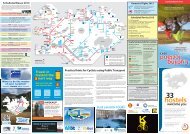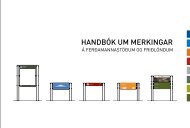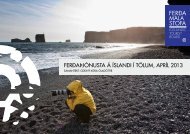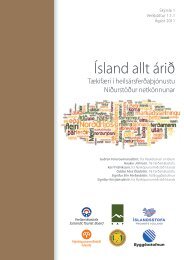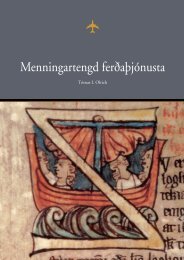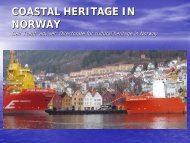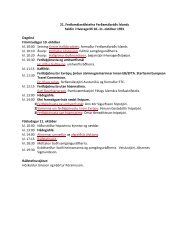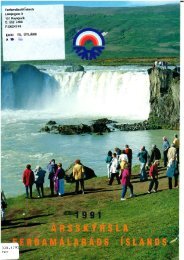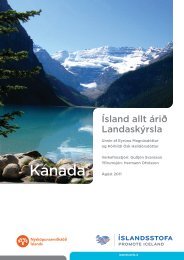Untitled
Untitled
Untitled
You also want an ePaper? Increase the reach of your titles
YUMPU automatically turns print PDFs into web optimized ePapers that Google loves.
Eight on my list is the heritage of discovery and exploration, fostered by<br />
the medieval Viking sagas that have been told and retold to every<br />
Icelandic child. This is a tradition that gives honour to those who venture<br />
into unknown lands, who dare to journey to foreign fields, interpreting<br />
modern business ventures as an extension of the Viking spirit,<br />
applauding the successful entrepreneurs as heirs of this proud tradition<br />
(Grímsson cited in Reykjavik Grapevine 2009, issue 4, p. 8).<br />
So it is that the old scars of cultural imaginationings cut much<br />
deeper than the new recent wounds of the “kreppa”, the financial<br />
meltdown that hit Iceland in the fall of 2008. The media coverage that<br />
Iceland received during the height of the crises could hardly have been<br />
bought for money, and the favourable Icelandic krona exchange rate seems<br />
to be propelling the tourism industry into new times and rounds of<br />
prosperity. Whatever the future has to offer, it is clear that the financial<br />
turmoil has once again put tourism at the centre of Icelandic<br />
imaginationing in its position as prime rescuer of the post war resource<br />
driven economy (see Jóhannesson & Huijbens, forthcoming). As it was<br />
said before the crisis:<br />
In every part of Iceland there are investments that need to bring in a<br />
return. If we could manage that, there would be economic growth in all<br />
the rural areas. Behind every 50,000 tourists there are around a thousand<br />
work years and 60 million dollars in added value distributed through all<br />
parts of society (Magnason 2008, p. 273).<br />
This economic imaginationing of tourism may be compared with the<br />
parliamentary resolution on tourism, “Tourism strategy 2006-2015”, with<br />
its vision of environmental consciousness and features like “purity”,<br />
“health”, “safety” and the country’s “beauty” in terms of untouched nature.<br />
Incidentally, during the last two decades the cover of Iceland’s Tourist<br />
Board’s yearly brochure has predominantly presented an image<br />
characterized by water, rather static nature and bluish colours<br />
(Gunnarsdóttir 2007). This seems to be well in line with a common rule in<br />
tourism of marketing “groomed spaces”. According to Hunter:<br />
46



